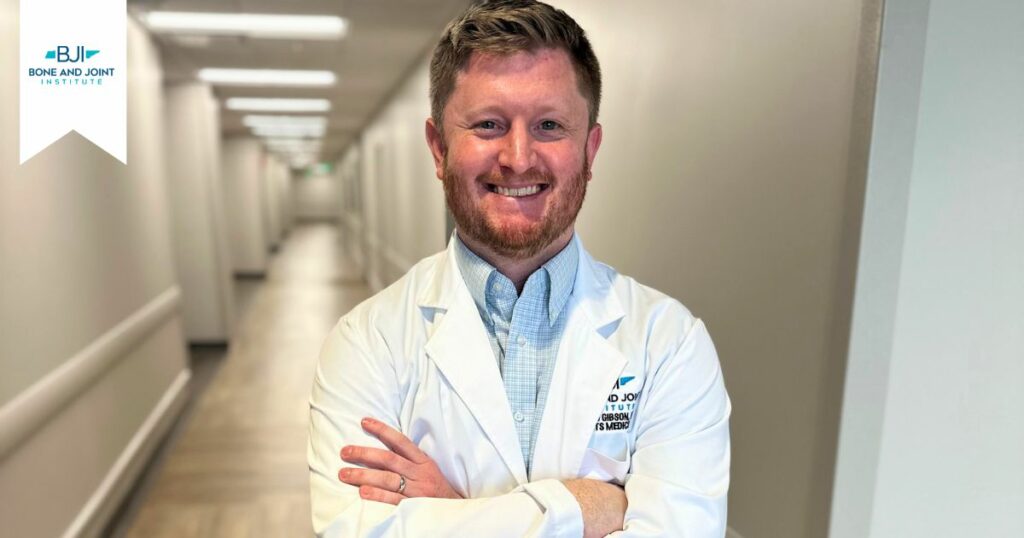5 Things To Know About COPD with Dr. Jordan Phillips
Published: November 8, 2024
Originally published in YOUR Williamson —
Chronic obstructive pulmonary disease (COPD) impacts nearly sixteen million Americans and ranks among the top ten causes of death in the U.S., according to the Centers for Disease Control and Prevention. Despite its prevalence, many people still have limited knowledge of the condition.
As November marks COPD Awareness Month, Jordan Phillips, M.D., a board-certified pulmonologist and critical care physician at Williamson Health, is here to clear up confusion with five key facts about COPD.
What is COPD?
COPD is a chronic lung disease with different subtypes—emphysema and chronic bronchitis—and some people have both. The condition causes inflammation in the airways, making breathing difficult.
What are the risk factors?
“Smoking is the number one cause of COPD,” Dr. Phillips said. “Other risk factors would be any kind of fume or chemical pollutant exposures.” People who’ve worked in manufacturing, factories or around strong chemicals also face increased risk. “The best way to protect yourself is to avoid inhaled exposures and stop smoking,” Dr. Phillips advised. “Smoking cessation is the best thing you can do to maintain your lung function.”
What are the signs or symptoms?
The symptoms of COPD include shortness of breath, frequent coughing or wheezing, trouble taking deep breaths and sometimes, excess phlegm or mucus in the airways. These symptoms can be non-specific and vary in severity, so Dr. Phillips encourages patients to be proactive if they’re experiencing any of these symptoms on a regular basis.
“Any time you have persistent shortness of breath, especially with exertion, you should talk to your doctor about it,” she said. “These symptoms could suggest a heart or different lung problem, such as asthma, so it’s important to tell your physician and let your provider investigate and ask questions to see if you have any risk factors for a pulmonary problem.”
How is COPD diagnosed?
Doctors start by assessing your risk factors. If COPD is suspected, primary care physicians commonly refer patients to a pulmonologist like Dr. Phillips. Pulmonologists may use chest imagining, such as a chest X-ray or CT scan, to better visualize the lung along with other tests.
“We will do a pulmonary function test, which is a detailed breathing test that gives us a lot of information about a person’s lung function,” Dr. Phillips said. “That’s the standard test we use to diagnose COPD.”
How is COPD treated?
Managing COPD involves finding the right regimen of medicines that help keep inflammation in check and improve quality of life. Treatment usually includes maintenance inhalers to reduce airway inflammation and rescue inhalers for sudden flare-ups. Doctors may also prescribe oral medications as needed.
“We want to manage symptoms as early as we can so that patients can enjoy their daily lives,” Dr. Phillips said. “Acute issues may arise, but, as pulmonologists, we want to treat those exacerbations before patients get to the point of hospitalization.”
Cold and flu season often worsens COPD symptoms, as respiratory infections can trigger exacerbations. If you have COPD and notice increased coughing, shortness of breath or changes in mucus, Dr. Phillips advises contacting your doctor promptly to help manage any potential flare-up before it worsens.
Dr. Phillips recently joined the Williamson Health Medical Group Pulmonary and Sleep Medicine practice and is accepting new patients. To schedule an appointment, call (615) 790-4159. For more information on the comprehensive care provided by Williamson Health’s pulmonology and sleep medicine experts, visit williamsonhealth.org.
5 Things To Know About COPD with Dr. Jordan Phillips
Originally published in YOUR Williamson —
Chronic obstructive pulmonary disease (COPD) impacts nearly sixteen million Americans and ranks among the top ten causes of death in the U.S., according to the Centers for Disease Control and Prevention. Despite its prevalence, many people still have limited knowledge of the condition.
As November marks COPD Awareness Month, Jordan Phillips, M.D., a board-certified pulmonologist and critical care physician at Williamson Health, is here to clear up confusion with five key facts about COPD.
What is COPD?
COPD is a chronic lung disease with different subtypes—emphysema and chronic bronchitis—and some people have both. The condition causes inflammation in the airways, making breathing difficult.
What are the risk factors?
“Smoking is the number one cause of COPD,” Dr. Phillips said. “Other risk factors would be any kind of fume or chemical pollutant exposures.” People who’ve worked in manufacturing, factories or around strong chemicals also face increased risk. “The best way to protect yourself is to avoid inhaled exposures and stop smoking,” Dr. Phillips advised. “Smoking cessation is the best thing you can do to maintain your lung function.”
What are the signs or symptoms?
The symptoms of COPD include shortness of breath, frequent coughing or wheezing, trouble taking deep breaths and sometimes, excess phlegm or mucus in the airways. These symptoms can be non-specific and vary in severity, so Dr. Phillips encourages patients to be proactive if they’re experiencing any of these symptoms on a regular basis.
“Any time you have persistent shortness of breath, especially with exertion, you should talk to your doctor about it,” she said. “These symptoms could suggest a heart or different lung problem, such as asthma, so it’s important to tell your physician and let your provider investigate and ask questions to see if you have any risk factors for a pulmonary problem.”
How is COPD diagnosed?
Doctors start by assessing your risk factors. If COPD is suspected, primary care physicians commonly refer patients to a pulmonologist like Dr. Phillips. Pulmonologists may use chest imagining, such as a chest X-ray or CT scan, to better visualize the lung along with other tests.
“We will do a pulmonary function test, which is a detailed breathing test that gives us a lot of information about a person’s lung function,” Dr. Phillips said. “That’s the standard test we use to diagnose COPD.”
How is COPD treated?
Managing COPD involves finding the right regimen of medicines that help keep inflammation in check and improve quality of life. Treatment usually includes maintenance inhalers to reduce airway inflammation and rescue inhalers for sudden flare-ups. Doctors may also prescribe oral medications as needed.
“We want to manage symptoms as early as we can so that patients can enjoy their daily lives,” Dr. Phillips said. “Acute issues may arise, but, as pulmonologists, we want to treat those exacerbations before patients get to the point of hospitalization.”
Cold and flu season often worsens COPD symptoms, as respiratory infections can trigger exacerbations. If you have COPD and notice increased coughing, shortness of breath or changes in mucus, Dr. Phillips advises contacting your doctor promptly to help manage any potential flare-up before it worsens.
Dr. Phillips recently joined the Williamson Health Medical Group Pulmonary and Sleep Medicine practice and is accepting new patients. To schedule an appointment, call (615) 790-4159. For more information on the comprehensive care provided by Williamson Health’s pulmonology and sleep medicine experts, visit williamsonhealth.org.
Published: November 8, 2024










